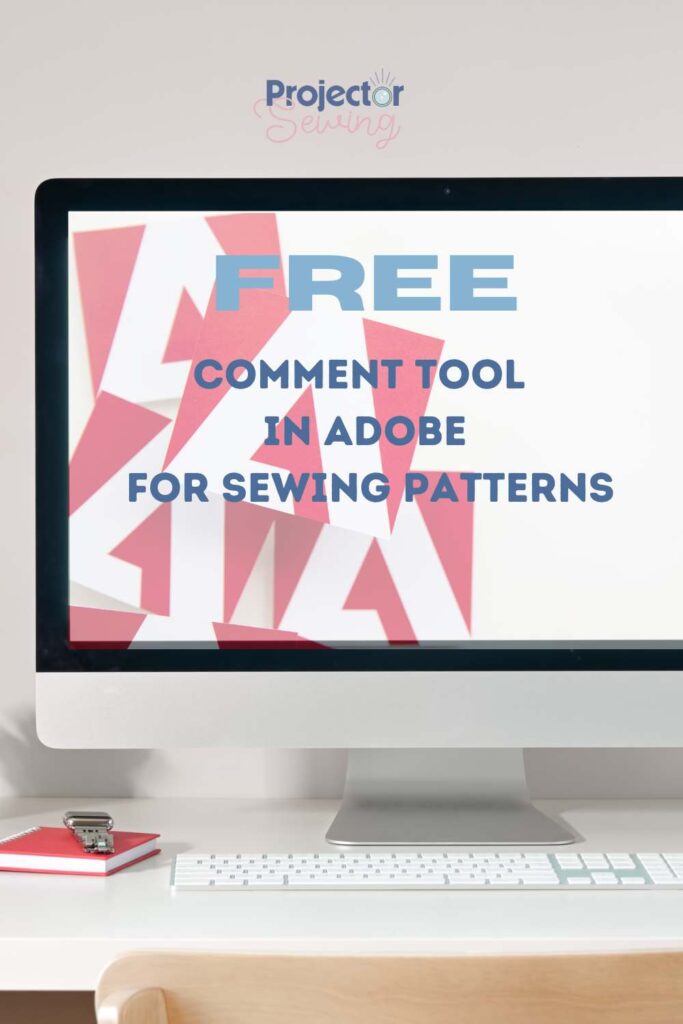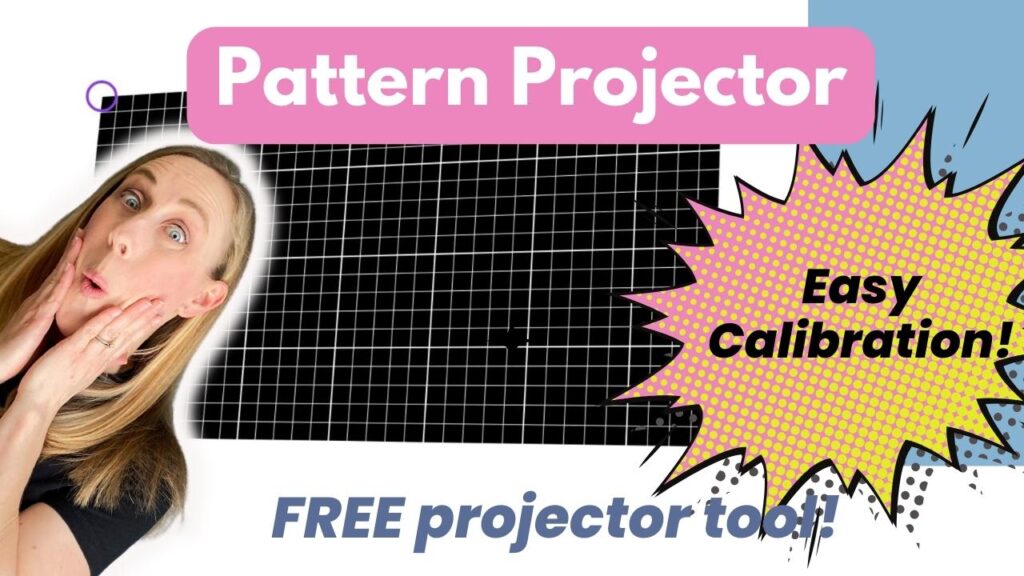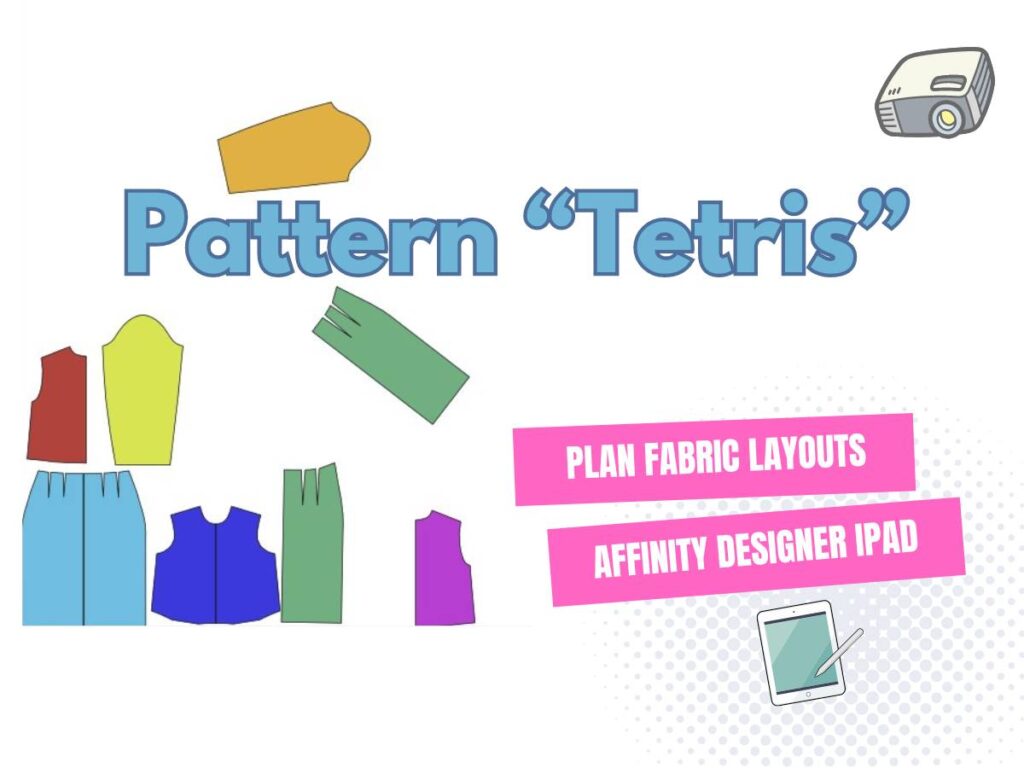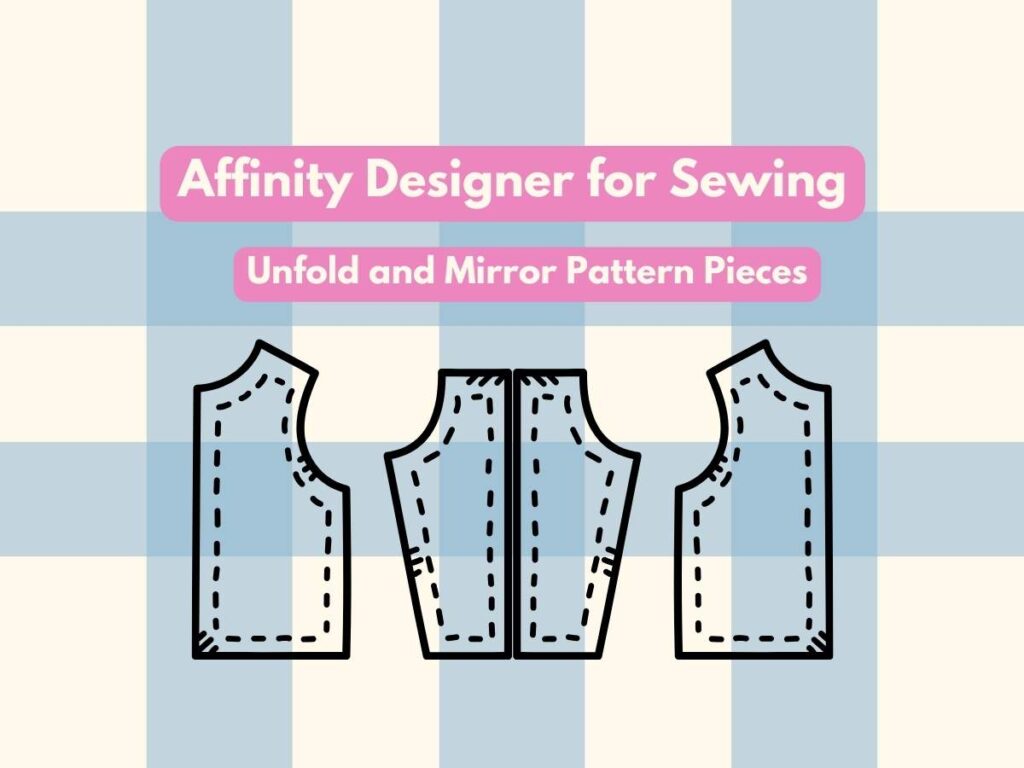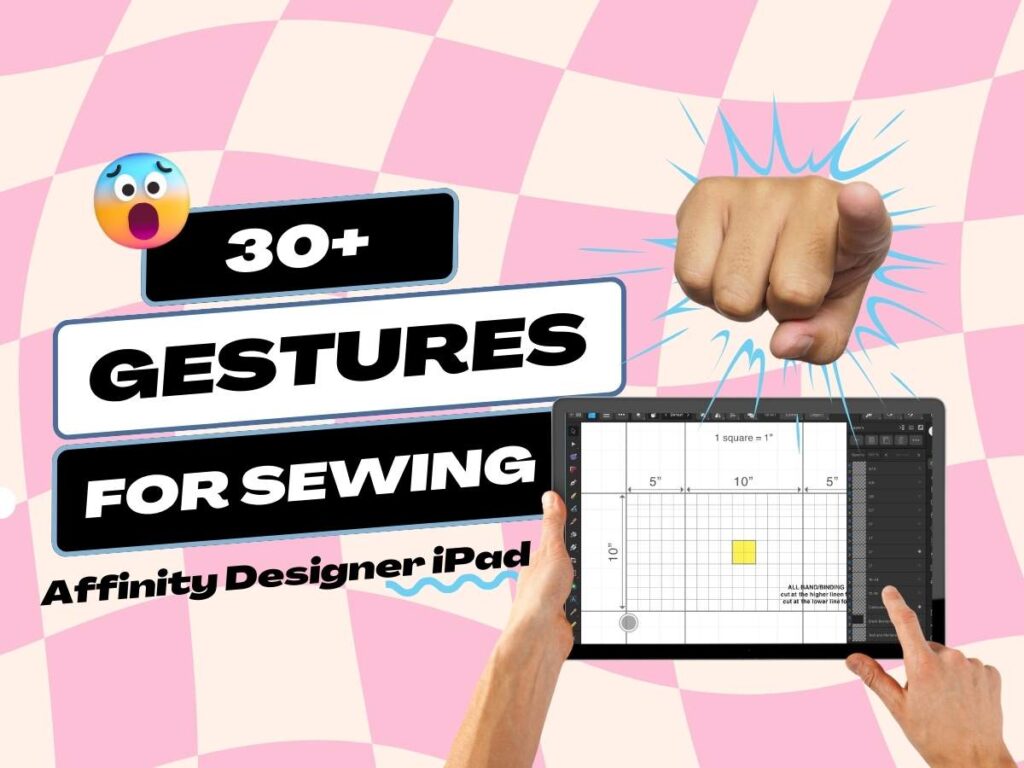Last updated on February 5th, 2024 at 02:31 pm
*This post may contain affiliate links and we may earn a small commission if you click on them.
The Adobe comment tool is a free feature that can be very useful for marking up any document. It can especially be helpful for sewists wanting to make notes and simple adjustments to patterns for projecting.
If you’ve never heard about sewing with a projector, make sure to check out the HOME page.
I highly recommend that you open a PDF pattern file right now and follow along as you learn about these amazing tools!
Adobe Acrobat has been slowly rolling out an updated version of Adobe. All comment and editing tools shown here can be accessed for free. I will show you the location in the “New” Acrobat and the “Old” Acrobat.
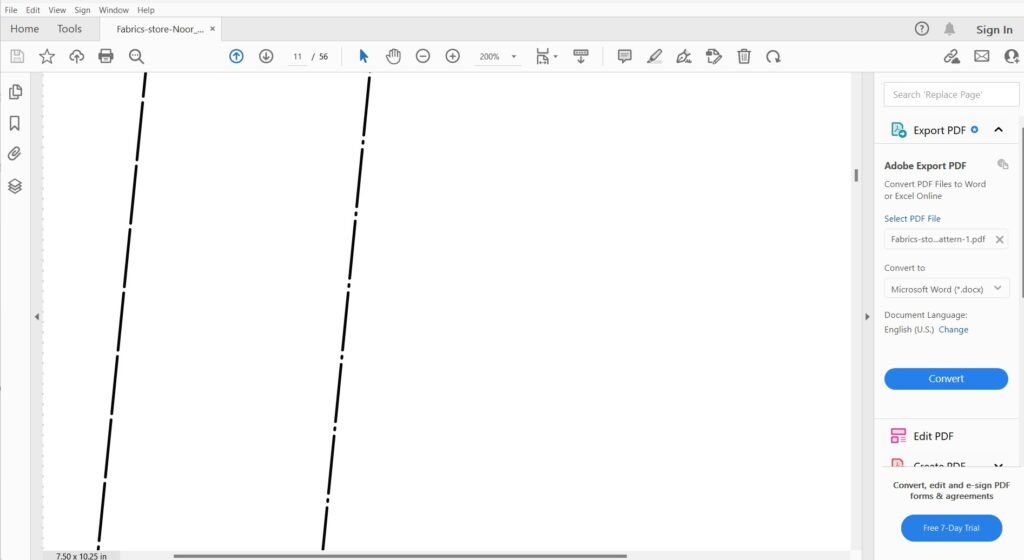
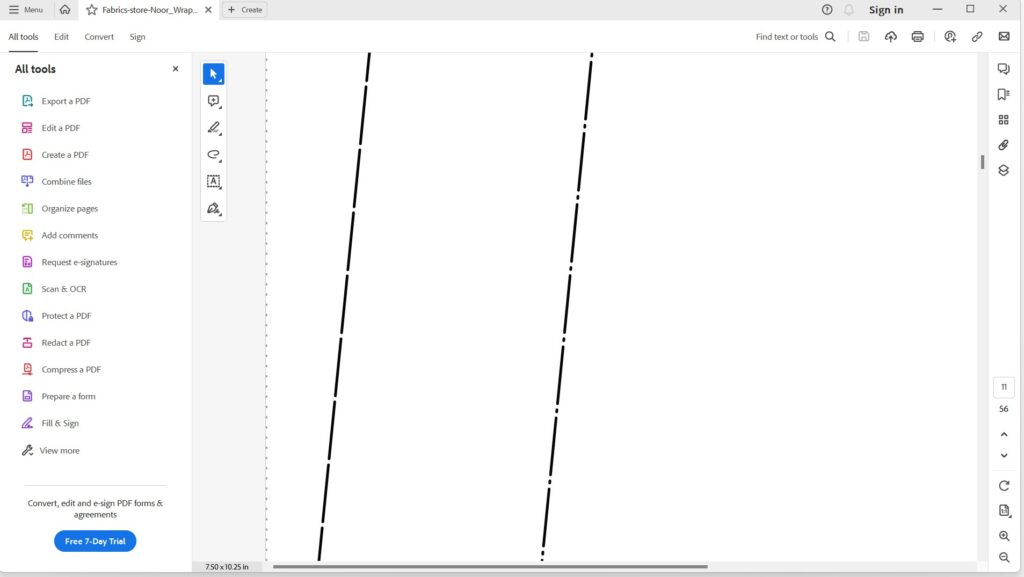
- How to make notes on Patterns in Adobe Using the Comment Tool
- Comments Tool Menu in Adobe
- Undo Comments or Markings
- Sticky Note Comment
- Highlighter Tool
- Text tools in the Comment Tools
- Draw Tool to Annotate Digital Patterns
- How to Use Stamps in the Comment Tool
- Save Your Comments in Adobe!
- Other Programs to Make Notes and Pattern Adjustments
- Conclusion
How to make notes on Patterns in Adobe Using the Comment Tool
Have you ever been projecting a pattern and wish you could write notes on it? Well, you can! Digital annotations can be created in Adobe right on your pattern! There are so many applications to this that the possibilities are endless.
I have even created a freebie to get you started making small changes to your patterns that will help you out in pattern projecting. This is especially useful for those that find projector pattern instructions difficult to see when projecting!
Don’t forget to pickup a freebie in the section about stamps!
Comments Tool Menu in Adobe
To get started making digital annotations in the “Old” Adobe, you will need to click on “comments”. The comments menu can be found on the right-hand screen menu and looks like a speech bubble. When you click on this the comment menu will appear.
*Your menu may be in a different vertical position than pictured.
In the “New” Adobe Acrobat, the tools that will be used show up when Adobe is opened on the left-hand side of the screen.
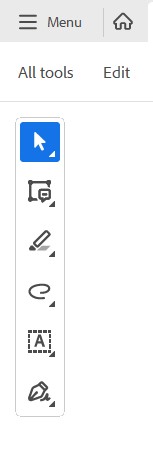
Undo Comments or Markings
Before beginning a tour of all the tools, it is a good idea to note how to delete mistakes. In Adobe Acrobat reading comment tool, you can press CTRL+Z to undo. Selecting an object that you inserted and pressing the delete button on your keyboard works too!
Deselect a comment tool by clicking on a different tool or the selected tool again.
Using the comments on “Locked” Patterns
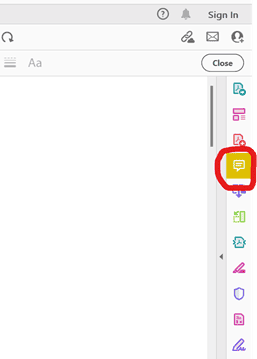
Some pattern companies “Lock” their PDF files and don’t allow you to use the comment tools. You can still make notes on the pattern, but you need to “unlock” the file first. This is done using the program PDF Stitcher or on Sedja.
*Make sure to use this tutorial on PDF Stitcher if you need to unlock a pattern.

Sticky Note Comment
The “Old” Adobe Comment Tool
This first icon on the comment menu is a comment box or sticky note. Click the icon, then click anywhere you would like to add a note. After clicking a box will pop up and you can begin making notes!
You can make notes about the pattern such as any adjustments or grading that needs to be made, the material you want to cut a particular pattern piece from, etc. When you are finished making a note, click anywhere on the screen out of the text editing box. Your note will disappear and only the yellow comment box will be left. Click on the comment box at anytime to see your note!
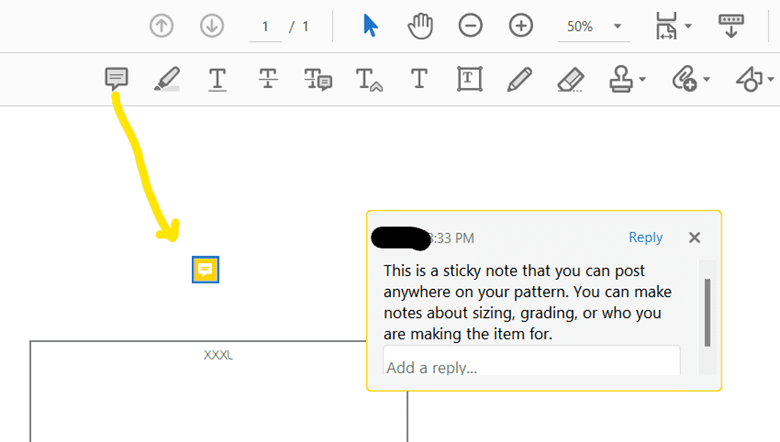
The “New” Adobe Comment Tool
The comment tool in the “New” Adobe can do all of the things that you were capable of in the “Old” Adobe. On the toolbar, the comment section is the second tool on the menu. The comment section on this tool bar replaces all of the text options from the “old” version.
You have five options to choose from: Add a comment, replace selected text, insert text, Add text comment, and attach a file.
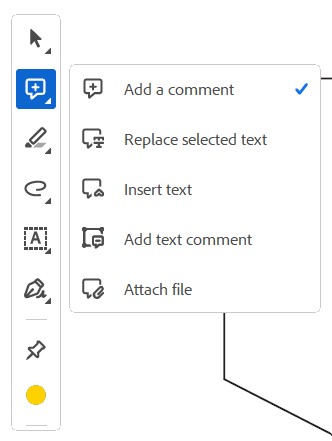
For sewing purposes, the most useful of these options is “Add a text comment”. This will put a text box right where you click and you can enter notes about the pattern that you want to remember while projecting. Some will put grading notes or mention the fabric to cut each piece out of.
Highlighter Tool
“Old” Adobe Highlighter Tool
The next tool to make digital annotations in Adobe is the highlighter tool. Click the tool that looks like a highlighter, then highlight any text that you want. This may be helpful to highlight size markings or names of pattern pieces that you want to cut. This will only highlight text.
For non-layered patterns, this tool can be especially useful to highlight the text of sizes that you need.
The color of the highlighter can also be changed as needed. By clicking on the colored circle next to the push pin on the right of the menu.
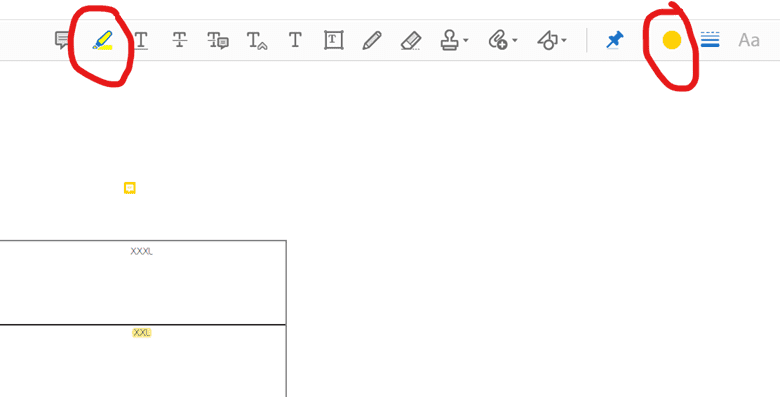
The “New” Adobe Highlighter Tool
The highlighter tool can highlight text on any document. You can use this to highlight the important information on a document, or highlight the size label of patterns that are not layered.
You can change the color and thickness of the lines using the buttons at the bottom of the tool menu.
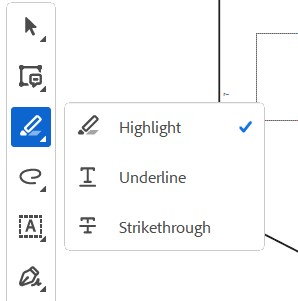

Text tools in the Comment Tools
“Old” Adobe Text Tools
I am going to lump all of the text tools together because many of them do similar things. You can use whichever works best for your purposes.
This first text tool is a T . This tool allows you to underline any of the text on the document. You can also change the color of underlining.
Next is the strikethrough. If you do not want to cut a piece you can strikethrough the text.
Similar to the strikethrough, is the strikethrough with a comment. If you are grading between sizes and have two sizes pulled up, this is a great way to cross the size you don’t want and write a note to remind you of why. I have crossed out the next button which is the insert text at cursor button. I have not really found a use for this other than what can be done with other buttons. The text tool T is exactly that. You can click that, then click anywhere to add your text. If your text is not going the direction that you want, you will need to rotate the page to the orientation you want before adding text. Similar to adding text is using the next tool which is a text box. The text box will cover up anything behind it. Click the tool and click where you want to add a box. Drag the cursor to make a box any size you desire. Next, type any directions or comments for your pattern. You can also drag and drop the text box anywhere on the document.

The “New” Adobe Text Tools
The text tools in the “New” Adobe are a little bit different. As mentioned in the comment section, you can use the comment tool to type boxes of text.
However, there is an additional text tool available. This text tool allows you to type text anywhere, put an “X” or checkmark, crossout, or (my favorite) the dot!
I use the dot for marking areas on the pattern when it is too big to project the entire piece at once. These are guides I mark on the pattern and fabric. Then, I shift the fabric and pattern. Next, line up the dots again with the fabric. Finally, I finish cutting out the pattern on the fabric! Here is a tutorial on cutting out patterns larger than your projection.
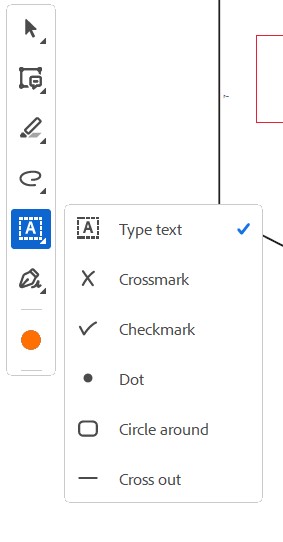
Draw Tool to Annotate Digital Patterns
“Old” Adobe Draw Tool
The pencil is the next tool on the comment menu. The pencil is a freestyle draw tool. It can be used to draw quickly on the pattern.
The color and size of the line can be adjusted using the color circle and lines on the far right of the menu. The draw tool opens up possibilities of digital pattern grading, but can be difficult to get straight lines and smooth curves. That is why I recommend the shapes tool.
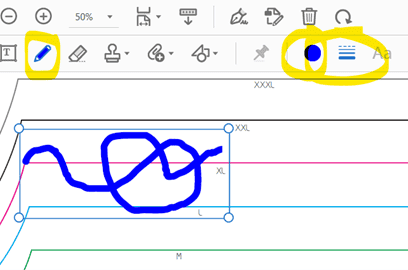
You can see the shapes tool at the end of the comment menu. Experiment with the different shapes to see what you like best!
One of the most useful tools for drafting and grading is the connected lines shape tool. When you click on the shapes, it is the second to last option. Here I quickly drafted a higher neckline on this top. When you first draw a shape with the connected lines tool, you will have a solid line.

You can create dashed lines by clicking on the line you made. Then, right click and select “Properties. In properties you can change the color, size, and style of the line. To make a solid line dashed, choose “Style” then select a dashed line.
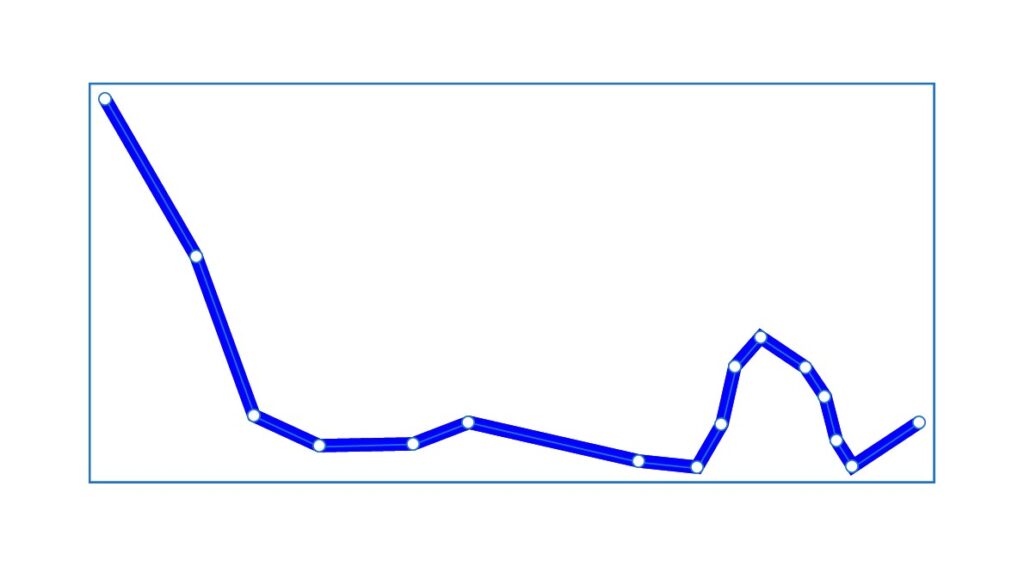
You can also edit the line when using the draw connected lines tool. Just select it and you will see editable “nodes” appear. Click on the nodes and drag the line where you want!
The possibilities for grading and using a digital pattern just like you did paper patterns are endless with these tools!
Take a look at the photo to see how the connected lines tool was used for some simple grading.
The small size was used for height and the XS was used for the width.
You can change to opacity of the lines, enabling you to view the smooth original lines underneath for more precision cutting.
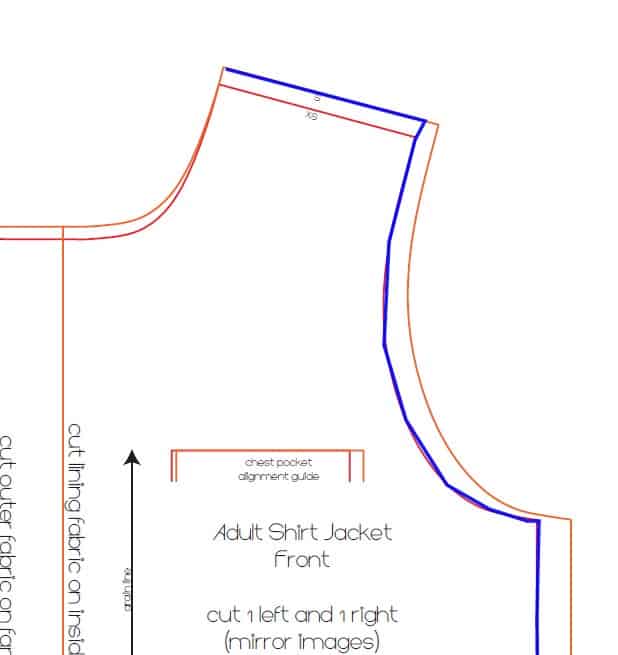
“New” Adobe Draw Tools
All the draw tools in the “New” Adobe are located under the tool that looks like a squiggle line. You can see the notes above under the “Old” Adobe draw tools to see what each one does.
The “connected lines” draw tool is the most useful for sewing. You can quickly draw on your pattern to grade sizes or trace a size in a pattern that is not layered.
This is a great tool for those simple adjustments and those not wanting to import the pattern into Inkscape or Affinity Designer!
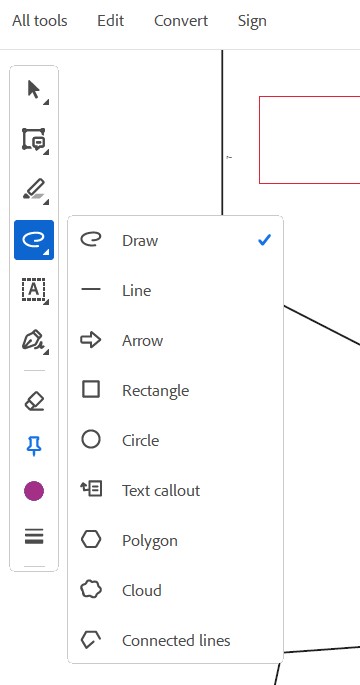
How to Use Stamps in the Comment Tool
“Old” Adobe Stamp Tool
The stamp tool is a comment tool in Adobe often overlooked, but it is a niffy tool to have in your back pocket! You can use the stamps I’ve created below or make your own.
Do you ever find yourself marking the same things over and over on a pattern? Then, use a stamp!
A stamp is an image that you can place on your document. Stamps is a free tool in Adobe that has been used in business documents for “sign here” and “approved”.
Some projector files and A0 files have font type that is just too small to read when projected. If you keep having to go back to your computer to zoom in to see what your pattern pieces say (ie: cut 2, cut 1 on fold, etc.), then I have the perfect solution for you.
I created a set of stamps to put right on pattern pieces! Some stamps that I have created are Cut 1, Cut 1 on fold, Grainline, Cut 2 Mirror Images, and Do Not Cut. You can download these stamps for FREE here!
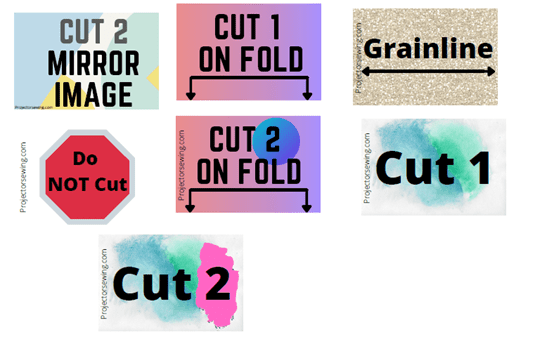
These stamps can be placed on the pattern piece and enlarged to however large you need in order to see clearly when projecting. These save you a lot of time double checking the instructions and can be saved to your pdf pattern!
Another way I’ve used my own stamps is for “splicing” markers. This is when the entire pattern piece doesn’t fit in your projection. A stamp or marker on your pattern helps to line up the pattern on your fabric once you have shifted it!
“New” Adobe Stamp Tool
In the “New” Adobe the stamp tool is in a different place than the other tools we have been using. Click on the “All Tools” menu that is just under the main hamburger menu.
In this menu, scroll down and click on “view more”. Then, you will see the “Stamps” tool listed. From here you can use, create, and mangage custom stamps (like the free download above).
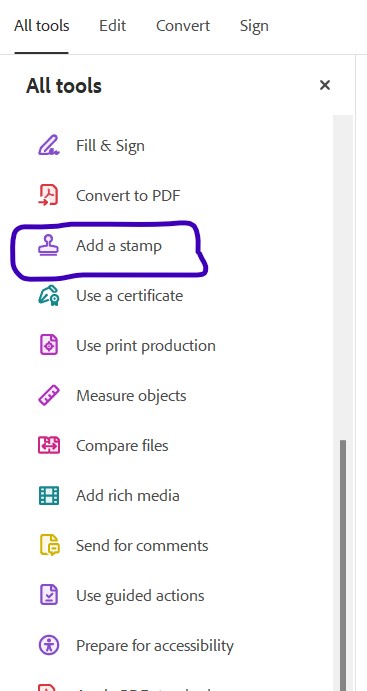
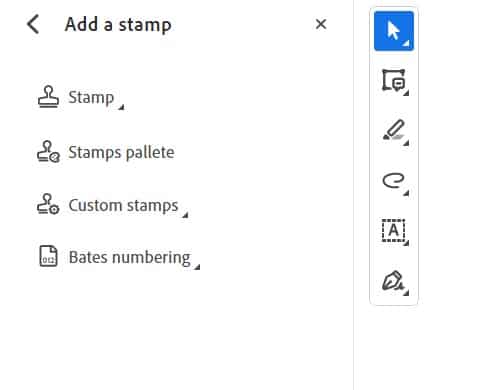
How to download and Use Stamps in Adobe
Click the download button to download the set of PDF image stamps. The stamps can be used from your “Downloads” folder or you can place them in a folder on your computer. Once they are uploaded into Adobe, you do not need the original files.
Open Adobe acrobat and any pdf file that you have. Then, open the comment menu. In the comment menu click on the “stamps” tool.

Click the dropdown menu on the stamps tool and choose Custom stamps>create. In the popup menu, browse and find an image to use as a stamp. Click on the PDF image, then click “Ok”. When you click okay you will need to categorize and name your new stamp. I created the category “Projector Sewing”, but you can name it anything. Then, I named the stamp “Cut 1 on Fold” since that is the stamp picture I chose to import. Then click “OK”.
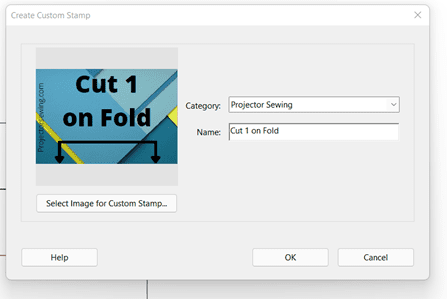
Repeat this process for all the custom stamps. Once you have loaded all the stamps then you will have them every time you open Adobe. Now when you click on the stamps tool you should see the category that you created. Select the category then choose the stamp you want. The stamp will appear on your cursor and you can place it anywhere on the document. For directional specific stamps, you will need to rotate the PDF document before adding the stamp since the stamps cannot be rotated.
Enjoy stamping and having easy-to-read directions applied to all your patterns at a click of the button! Let me know how it works out for you and anything else you would like to see!
Save Your Comments in Adobe!
The last and most crucial part of making digital annotations with the comment tool in Adobe is to save your hard work! I always recommend using the “Save As” (File>Save As) button so you can save different versions.
Name your annotated pattern on your computer so that you know exactly the changes that have been made.
*VERY IMORTANT: You MUST close the comment tools menu before projecting patterns in full screen mode. The comment tools menu will not allow you to enter full screen mode.
Other Programs to Make Notes and Pattern Adjustments
Adobe isn’t the only program that allows you to make digital annotations, trace, and grade patterns. If you are looking for more advanced tools to make changes to patterns, such as unfolding pattern pieces, you may be interested in looking into Inkscape or Affinity Designer.
Inkscape is a free program and can be downloaded on MacOS, Windows, or Linux. Affinity Designer can run on MacOS, Windows, and the IPad. Affinity Designer is a program that many use to unfold pattern pieces, mirror pieces, scale, grade, and more. With the added features of Affinity Designer look to be paying around $70 for the Mac or Windows version and $20 for the IPad app.
Conclusion
Now you can feel like a techy pro with these tips for using the comment tool in Adobe to make annotations. These tools allow you to make all the notes that are typically made on paper patterns and more.
The best part is that you can save your hard work and return to it over and over again. No need to reprint patterns if you need to complete a different size or grade differently.
No extra programs need to make simple pattern adjustments or grade between sizes! Everything can be done for free right on your computer. Then, you can project your pattern the same way you always do!
I hope you enjoyed this! Sharing is caring, feel free to link to this article for those who may be interested as well.
